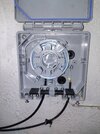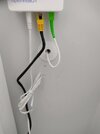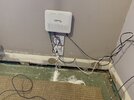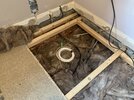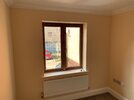I would like to relocate my fibre broadband from the 1st floor to a room in my loft
There is a grey box outside. Inside of the grey box, two cable are joined together (pic 1)
1. Can anyone explain how the two cables are joined together?
One of the black cable from the grey box comes into my property and this then connects into the optical slot in the white box
2. How does this happen?
Is there some sort of guide online about moving you fibre broadband.
There is a grey box outside. Inside of the grey box, two cable are joined together (pic 1)
1. Can anyone explain how the two cables are joined together?
One of the black cable from the grey box comes into my property and this then connects into the optical slot in the white box
2. How does this happen?
Is there some sort of guide online about moving you fibre broadband.


